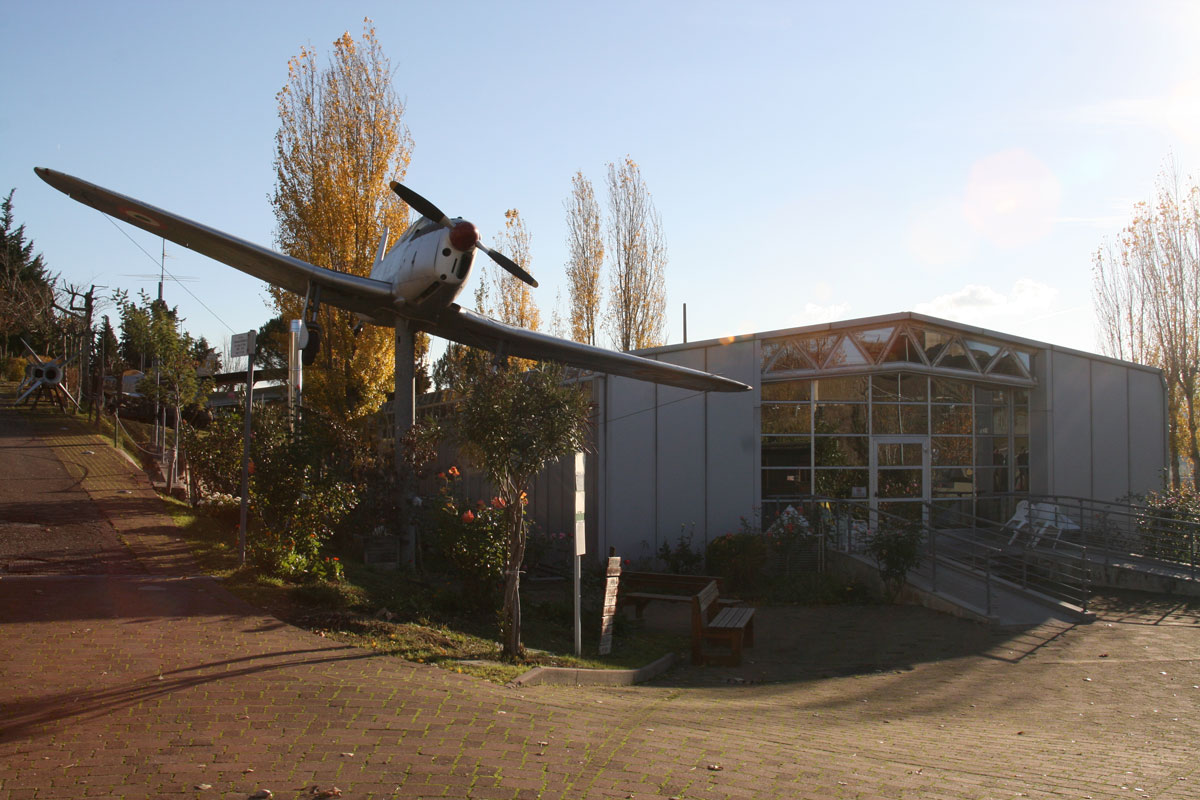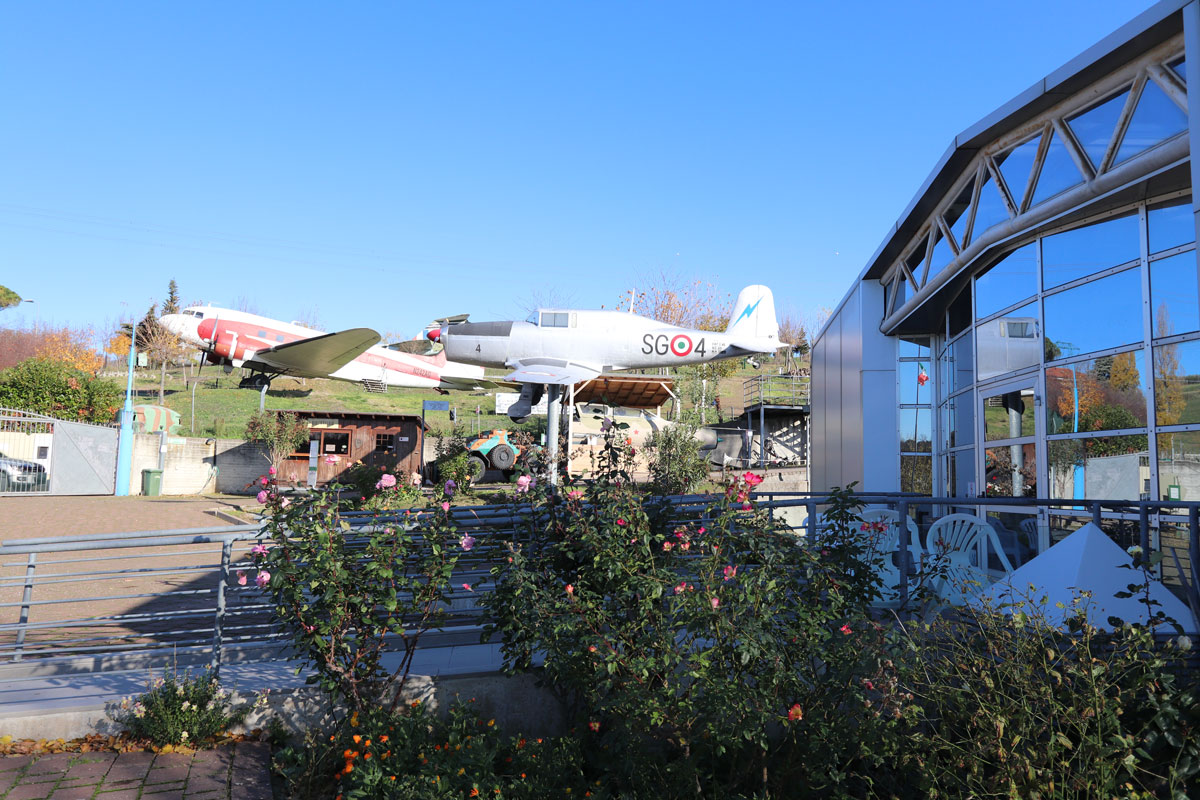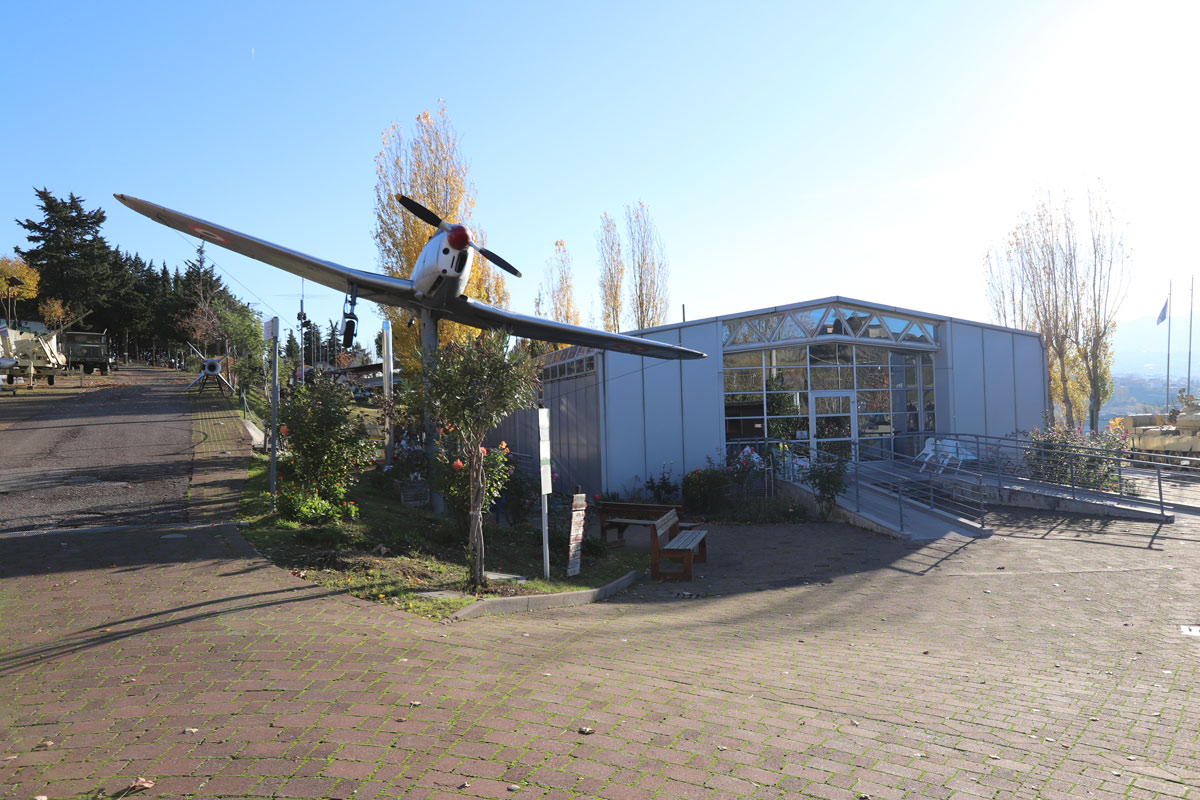Pavilion
Pavilion



The Pavilion is a covered exhibition area in which historical objects are exhibited including:
– Uniforms
– Medals
– Books
The first building that you encounter when entering the park is the Aviation Museum. The modern pavilion that houses the rooms is made with an advanced design and technologically advanced materials. It rises on different levels and exposes what most of the time is not stored in any other part of Italy and the world.
Glass bulletin boards present to the public the uniforms and flight suits used by our pilots and specialists from the early twentieth century: from the uniforms that were the first pilots coming from the two existing weapons (Army and Navy), until reaching the suits from our current pilots of the Frecce Tricolori, F-104 and Tornado (on the lower floors). As evidence of their origin, in each bulletin board are visible the photos that testify the events of the soldiers who wore them. So we find the Great Summer Uniform for Officers, next to the photo that shows the car parade in the central streets of New York under a rain of leaflets praising the unforgettable Atlantic Crossing, carried out by our seaplane crews in 1933; the Manta Capota worn by our Pilot Officers during the Spanish War (1936) and the Meharista Officer’s uniform (Italian camel troops). In addition to these photos, you can appreciate others that depict war actions, air combat or bombing and their effects, or simply the pilots and planes that celebrate the achievement of a prestigious record. In the great underground vault you can admire hundreds of decorations, decorations and medals, many of which are given to the greatest personalities of the time: Gabriele d’Annunzio, Aldo Finzi, Benito Mussolini, Italo Balbo and others (not being able to list them all in this headquarters we remember that as many as 24 pieces are unique in the world, that is also missing in the collection of the State Museum).
In addition to all this rigorously original material, aircraft now irretrievably lost are retained photos or have been rebuilt models in small scale. Always by good modellers is also the great diorama representing the most important phases (takeoff and ditching) of the famous Siai SM.55, the famous aircraft that so much glory gave to Italy in the ’30s, making the adventurous transatlantic flight with twenty-four seaplanes that, taking off from Orbetello via Ireland, Iceland, North Pole and Canada reached Lake Michigan near Chicago. Finally, in a special room, the films are projected with images taken by the film operators of the time, and anything else can still remember the times in which we competed and won with countries at the forefront of aeronautics like the United States, England , France and Germany.




The Pavilion is a covered exhibition area in which historical objects are exhibited including:
– Uniforms
– Medals
– Books
The first building that you encounter when entering the park is the Aviation Museum. The modern pavilion that houses the rooms is made with an advanced design and technologically advanced materials. It rises on different levels and exposes what most of the time is not stored in any other part of Italy and the world.
Glass bulletin boards present to the public the uniforms and flight suits used by our pilots and specialists from the early twentieth century: from the uniforms that were the first pilots coming from the two existing weapons (Army and Navy), until reaching the suits from our current pilots of the Frecce Tricolori, F-104 and Tornado (on the lower floors). As evidence of their origin, in each bulletin board are visible the photos that testify the events of the soldiers who wore them. So we find the Great Summer Uniform for Officers, next to the photo that shows the car parade in the central streets of New York under a rain of leaflets praising the unforgettable Atlantic Crossing, carried out by our seaplane crews in 1933; the Manta Capota worn by our Pilot Officers during the Spanish War (1936) and the Meharista Officer’s uniform (Italian camel troops). In addition to these photos, you can appreciate others that depict war actions, air combat or bombing and their effects, or simply the pilots and planes that celebrate the achievement of a prestigious record. In the great underground vault you can admire hundreds of decorations, decorations and medals, many of which are given to the greatest personalities of the time: Gabriele d’Annunzio, Aldo Finzi, Benito Mussolini, Italo Balbo and others (not being able to list them all in this headquarters we remember that as many as 24 pieces are unique in the world, that is also missing in the collection of the State Museum).
In addition to all this rigorously original material, aircraft now irretrievably lost are retained photos or have been rebuilt models in small scale. Always by good modellers is also the great diorama representing the most important phases (takeoff and ditching) of the famous Siai SM.55, the famous aircraft that so much glory gave to Italy in the ’30s, making the adventurous transatlantic flight with twenty-four seaplanes that, taking off from Orbetello via Ireland, Iceland, North Pole and Canada reached Lake Michigan near Chicago. Finally, in a special room, the films are projected with images taken by the film operators of the time, and anything else can still remember the times in which we competed and won with countries at the forefront of aeronautics like the United States, England , France and Germany.


